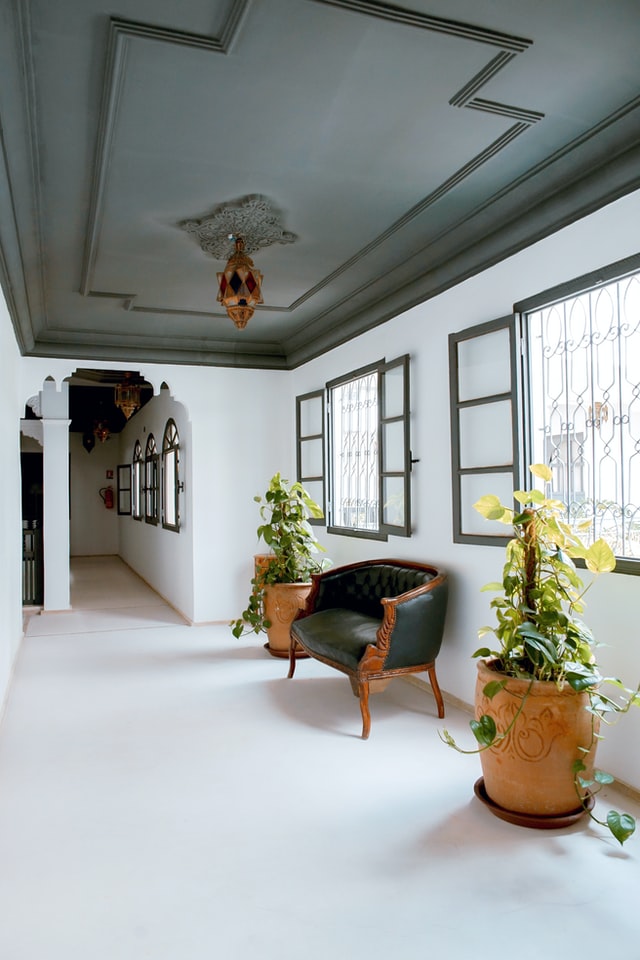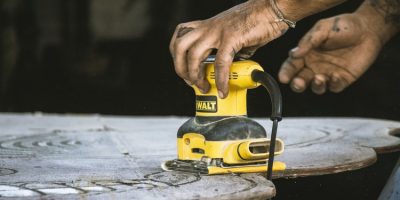Crown molding inside a room generally helps to have a relevant increase over the character of the room as well as enhancing your personal style. Although crown molding is a simple home upgrade over its interior, it does create a big transformation of the overall appearance. To achieve this, the process on how to measure angles for crown molding in a precise way produces a seamless connection within the segments.
Below are helpful tips that will generally guide you to successfully measure and cut crown molding.

Crown Molding Materials and Profiles
Actually, there are available crown molding that is ready-made. The materials used for this are the wood, fiberboard of medium-density, and polyurethane. Meanwhile, the customized crown moldings come out of plaster materials. Moreover, there is also the edging that comes in decorative design which entails various styles of profile.
Generally, the profile acts to define the appearance of the crown molding when viewed on its side. The profiles highly depend on the very basic line patterns to highly intricate carvings. Basically, the latter crown molding style will work pretty well on a big conventional room. It is actually advisable to install a clean molding that has a flat profile.
Crown Molding Size
The room dimension and the overall style of it is the major factor to consider in order to identify the appropriate size, design, the materials to be used for crown molding. Generally, the size is very crucial here as an oversized crown molding will make it too cramped out and overwhelm the room. Meanwhile, the crown molding that is a little bit undersized will most likely result in inadequate impact and panache. Here are some helpful tips that you might have to consider when you want to know how to measure angles for crown molding based on the ceiling size.
How to Measure Angles for Crown Molding based on Ceiling Size of Eight Feet and Below
The crown molding usually has a standard measurement of around 3 and 20 inches in width. One way on how to measure angles for crown molding and to identify its width, make use of the room height measurement. Afterwards, install a crown molding measuring around 3 and 5 ¾ inches in width.
Meanwhile, remember that a larger room can cater to wider crown molding and a narrow crown molding perfectly fits over a smaller room. However, it is highly advisable to install crown molding that reflects out into the ceiling when the room is smaller and has a ceiling below 8 feet.
How to Measure Angles for Crown Molding based on Ceiling Size of 9 Feet to 10 Feet
How to measure angles for crown molding based on the size of the ceiling measuring 9 to 10 feet is somehow different. Initially, you have to estimate the width of the crown molding by allowing a ½ inch of elevation for every foot of the height of the ceiling. Generally, you need to make an adjustment in an upward direction for rooms that are bigger.
Moreover, install around 4 ¼ and 7 inches wide crown molding over the room. Basically, it is advisable to design the crown molding to protect the seam of the ceiling and the wall on a horizontal position over a spring angle. Perhaps, this angle must have a measurement of about 38 or 48 degrees.
How to Measure Angles for Crown Molding based on Ceiling Size of 10 Feet and Above
In order to create a good visual impression, taller room ceilings need very relevant crown moldings that are wider. This also applies true even for smaller rooms. Basically, you need to estimate the width of the crown molding by allowing a little bit elevation for every foot within the height of the ceiling. This elevation should generally have a measurement of at least an inch or 1.12 inch.
Subsequently, install 7 inches or wider crown molding within the room that has 10 feet or above ceiling height measurement. In case you want to create illusion over a wider crown molding, simply combine multiple cuts over the top or bottom of the angle molding.

Installation of Crown Molding
Overhauling the appearance of the ordinary room demands for the installation of crown molding. Just a little piece of crown mold may generally provide a great impact on the visual appearance of the room. This may also provide a basic but elegant design to the spaces. Moreover, utilization of appropriate tools and set up, the installation process for crown molding would be easier.
Basically, the wood is the most common material for crown molding in which it goes along with the popularity of urethane being its material as well. The urethane material for crown molding is generally light in weight, flexible, and appears like solid wood. Aside from that, the urethane comes in pre-primed which simplify the process of painting and works on a less messy surrounding.
Setting up the installation process
Like any other project, setting up of tools basically identifies the convenience of finishing up a crown molding task. Primarily, installing crown molding is a task that needs two people. Extra hands in putting precisely the crown molding against the wall is generally a great help.
The next thing to do is to set up the needed materials along with the site of crown molding installation. Basically, place around a plastic tarp and took on the miter saw. Bear in mind that working on the site of installation can generally save you more hours. Installing a crown molding also necessitates for other tools like the pneumatic nailer, finishing nails, tape measure, utility knife, caulk gun including a high-quality adhesive, pencil, and wet rags.
Preparing the miter saw
Generally, cutting out of the crown molding revolves around the measurements and angles. The standard size of cuts basically falls on a 45-degree angle. Yet, there are times that making adjustments around the corners will happen especially if it is not an exact 90-degrees. In case you already have the room angle measurements, you can start setting up the miter saw for crown mold cutting.
Measuring the lengths of the crown molding
Crown molding usually involves two angled corners and the alignment of it generally demands the leaning of the crown against the ceiling and the wall. Oftentimes, the use of miter saw in cutting for the appropriate size may lead to frustration. This is especially true due to the fact that walls rarely meet within the 90 degrees angle.
In terms of crown molding installation, the most common question that arises is the process of how to measure angles for crown molding? Below is the step-by-step guide to doing the measuring of angles. But, initially, you need the following materials:
- Tape measure
- Clamps
- Combination square
- Miter saw
- Pencil
- Safety glasses
- Scrap wood
Guide on How to Measure Angles for Crown Molding
Check this quick guide to successfully measure angles for crown molding.
1. Use scrap wood
Initially, to effectively do the process on how to measure angles for crown molding, use two pieces of scrap wood that have the same width. First, put one board on the wall that is close to the ceiling. Next, lay the second one over the top of the first which overlaps about an inch.
Generally, it is very essential to attach the second piece of the board at the outside portion which faces the inside part of the room. Within the inside portion that gears outside the interior of the room, place the second board. It should be on top of the first board and push the two boards into the corner.
2. Put markings and measure the crown molding
Once you already set up the settings, mark the location of the overlapping of the two scraps using a pencil. Simply draw a line through the corner of the board that is near to you. Subsequently, connect both of the opposite corners by closing the board edges to the ceiling and the pencil marking.
Next step on how to measure angles for crown molding is to use the combination square being a straightedge. With this, draw a diagonal line on one corner to another. The diagonal line is a representative of the actual angle bisection resulting from the two walls.
After setting the miter saw for cutting the bisection line, it is time to gauge the required length of the crown molding. Basically, run the tape measure from one corner to another. Keep in mind that in measuring, you need to cover each length of the wall and height of the ceiling.
The long points for crown molding during the cutting of the inside corners around the 45-degree angle is basically the length. In case, there will be an outside corner, the short point angle for crown molding will be identified by measuring the wall to the corner.
Moreover, one ideal way on how to measure angles for crown molding is to have a pencil and paper ready. This will generally help in tracking the cuts needed for the project.
Crown mold cutting
Once you are already done with the process on how to measure angles for crown molding and you have all the measurements, start with the cutting. Initially, position the molding with a similar angle for installation on the wall and ceiling within the saw. Place the molding on an upside-down position or backwards within the saw for getting the best cuts. Moreover, for the security of the segments, use clamps along with it as you make the cut and repeat the process with the others.
Aside from that, put some markings on the crown molding as an indication of the cut direction. This will generally aid in avoiding any further confusion. Besides, it will also be a helpful guide on visualizing the way to fit the pieces once installed. It will also be a big help to always check twice prior to cutting.
Basically, install the crown molding very tightly if possible. This will generally reduce the effects of further expansion and contraction of the crown molding as time goes. Perhaps, it is highly recommendable to cut the molding with the measurement of about ¼ inch in length on every 10-foot length. The objective for this is to ensure a perfect fit and make a little bit of pressure during the installation.
Actually, it is very challenging to properly fit the outside edges of the crown molding than that of the inside part. This is due to the reverse angles and more visible corners within the room which require a good look. Generally, there is a good rule of thumb here. First, cutting on the right-hand portion within the inside corner, turn to the left part the saw blade. In case of the left-hand corner, move the blade again to the right side.
Coping
Another step on the installation of the crown molding is the length and fit testing. For this, simply hold the pieces of crown molding into position. To achieve a better fit, basically, cope the tips of the crown molding since every corner does not have the exact 90-degrees angle.
Basically, when it comes to crown molding, coping is the removal of materials from the molding thickness to create a better fit with the adjoining molding. Using a crown molding made of urethane, the ordinary utility knife will basically do the job of shaving the material off. Continue the process of removing until you achieve a snug fit along with the corners. Another helpful tool for this adjustment process is the coping saw.
Installation
This process of installation is generally applicable for urethane molding. Initially, apply beads of the high-quality urethane adhesive within the entire top and bottom portions that will touch the wall and ceiling. Moreover, also ensure to apply adhesive on all of the joints as well.
Basically, begin working on one corner and press the crown molding into its position. Afterwards, swing the other corner into place to achieve the slight bowing of the crown mold into the center. Press the entire molding into place within the surface and fasten it using non-corrosive nails after securing the corners.
Due to the use of adhesive within the molding, this method allows for a cleaner process thus preventing the adhesive to contact with other parts of the wall or ceiling. In case there will be adhesive over the area where you do not want it to be, wipe it immediately and cleanly using a wet rag. If ever the adhesive leaks while still on the drying process, score out the material using a utility knife and remove it once dried.
Finishing with caulk

Generally, prior to installation and molding, it is highly advisable to paint the crown molding with the matching color with the ceiling. Doing this will help to touch up the holes and gaps of the nails during the completion of installation. Use a high-quality spackle in case of any gaps within the joints and fill the nail holes. Basically, sand lightly the areas and use paint to touch up and finish the job after the drying of the spackle.
Final Thoughts
Generally, how to measure angles for crown molding is challenging. Most of the time, it could also lead to frustration because most the wall edges do not have an exact 90 degrees measurement. But, following the proper method of measuring and cutting the crown molds will help you to be successful in this project.


